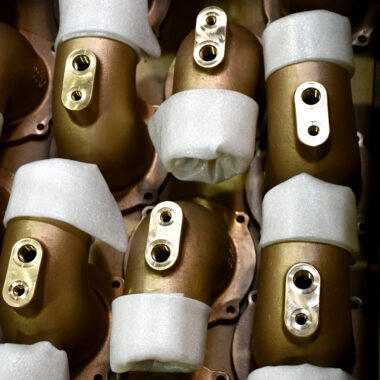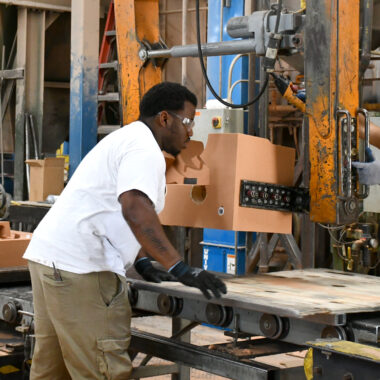The Art of Casting Aluminum: Grasping the Refine
The Art of Casting Aluminum: Grasping the Refine
Blog Article
Aluminum Casting Solutions Unveiled: Vital Insights and Tips
Checking out the world of aluminum spreading solutions can unveil a world of detailed procedures and nuanced factors to consider that are crucial for effective outcomes. As we venture into the world of light weight aluminum casting solutions, prepare to reveal the essential aspects that can form the trajectory of your projects and raise your understanding of this detailed craft.
The Basics of Aluminum Casting
What basic procedures are associated with aluminum casting that develop the foundation of this extensively used manufacturing technique? Aluminum spreading is a functional and cost-effective method used in different markets to produce facility and detailed steel parts. The procedure starts with the melting of light weight aluminum ingots in a heater, commonly at temperatures varying from 1220 ° F to 1670 ° F, depending on the specific light weight aluminum alloy being made use of. As soon as molten, the light weight aluminum is put into a pre-designed mold cavity, where it takes the form and strengthens of the mold and mildew.
After solidification, the mold and mildew is gotten rid of, and the spreading undergoes completing procedures such as warmth surface, treatment, and machining layer to meet the required specifications. Comprehending these essential processes is crucial for achieving top quality aluminum castings with mechanical residential properties and specific measurements.
Various Casting Techniques Described
Discovering the different methods utilized in aluminum spreading supplies useful understandings into the diverse approaches made use of to accomplish intricate and precise steel elements. One usual approach is sand casting, where a mold is developed utilizing compacted sand around a pattern of the desired component. This method is affordable and versatile, suitable for both straightforward and intricate forms. One more method, pass away casting, involves infusing molten light weight aluminum into a steel mold and mildew under high stress. Die casting makes it possible for high accuracy and repeatability, making it ideal for mass manufacturing of little to medium-sized components. For more detailed styles, financial investment casting is often liked. This method makes use of wax patterns that are melted away, leaving a dental caries for the molten light weight aluminum to load. Investment spreading yields exact information and smooth surfaces, making it preferred in industries like aerospace and auto. Each casting technique has its unique advantages and is picked based upon elements such as volume, expense, and intricacy considerations.
Elements to Think About When Selecting a copyright
When picking a light weight aluminum spreading solution supplier, examining their experience and expertise is crucial for ensuring quality and integrity in the production process. The company's experience in the field indicates their knowledge with various casting techniques, possible difficulties, and finest practices. It is essential to ask about the kinds of projects they have actually dealt with in the past, guaranteeing they straighten with the complexity and specifications of your very own project.
Additionally, think about the provider's track record within the sector. Look for evaluations, testimonials, and study that show their capability to provide top notch light weight aluminum spreadings regularly. A trustworthy service provider will typically have qualifications or associations with industry organizations, showcasing their commitment to excellence and adherence to industry standards.
Additionally, examine the copyright's capacities in regards to customization, volume requirements, and project timelines. Ensure that they can accommodate your specific needs and have the flexibility to scale manufacturing as called for. Reliable interaction and openness relating to expenses, lead times, and quality assurance processes are additionally critical variables to take into consideration when picking an aluminum casting provider.

Typical Obstacles and Solutions
Navigating with the intricacies of light weight aluminum casting processes commonly offers manufacturers with a series of difficulties that call for cutting-edge solutions to make sure effectiveness and top quality in manufacturing. One common challenge dealt with in light weight aluminum spreading is the development of issues such as porosity, contraction, or inclusions due to improper mold and mildew style or insufficient steel high quality. These flaws can jeopardize the structural integrity of the end product. To address this, producers ought to conduct extensive simulations and tests to enhance the casting process parameters and ensure the quality of the molds and products made use of.
Applying advanced technologies like computer-aided style (CAD) and computer system helpful resources mathematical control (CNC) machining can boost accuracy and consistency in aluminum casting. By investing in automation and real-time tracking systems, suppliers can improve process control and reduce variations, inevitably enhancing the overall quality of aluminum cast products.
Tips for Optimizing Your Casting Projects
To improve the effectiveness and high quality of your light weight aluminum casting jobs, carrying out critical optimization strategies is essential. One key suggestion for optimizing your casting projects is to thoroughly develop the gating system. By guaranteeing that the gating system is well-designed and properly positioned, you can boost the circulation of molten aluminum and reduce the opportunities of issues in the last casting. Additionally, utilizing computer system simulations can assist in examining the circulation and forecasting of metal throughout the spreading process, enabling changes to be made prior to actual manufacturing starts.

Conclusion
In final thought, understanding the fundamentals of light weight aluminum casting, various spreading techniques, variables to think about when picking a company, usual challenges and remedies, and tips for enhancing spreading projects are necessary for effective outcomes. By adhering to these understandings and applying best businesses, practices and individuals can make certain effective view publisher site and efficient aluminum casting solutions that meet their specific needs and requirements.
Understanding these fundamental processes is important for accomplishing premium aluminum castings with accurate dimensions and mechanical residential properties.
When picking a light weight aluminum casting solution supplier, this website examining their experience and experience is critical for making certain top quality and dependability in the manufacturing process. Reliable interaction and transparency regarding prices, lead times, and high quality control processes are additionally critical aspects to think about when choosing a light weight aluminum casting solution supplier.
Navigating via the complexities of light weight aluminum casting processes usually provides manufacturers with a collection of challenges that call for ingenious remedies to make sure efficiency and top quality in production. One typical challenge encountered in aluminum spreading is the development of problems such as porosity, contraction, or additions due to inappropriate mold layout or inadequate steel top quality.
Report this page